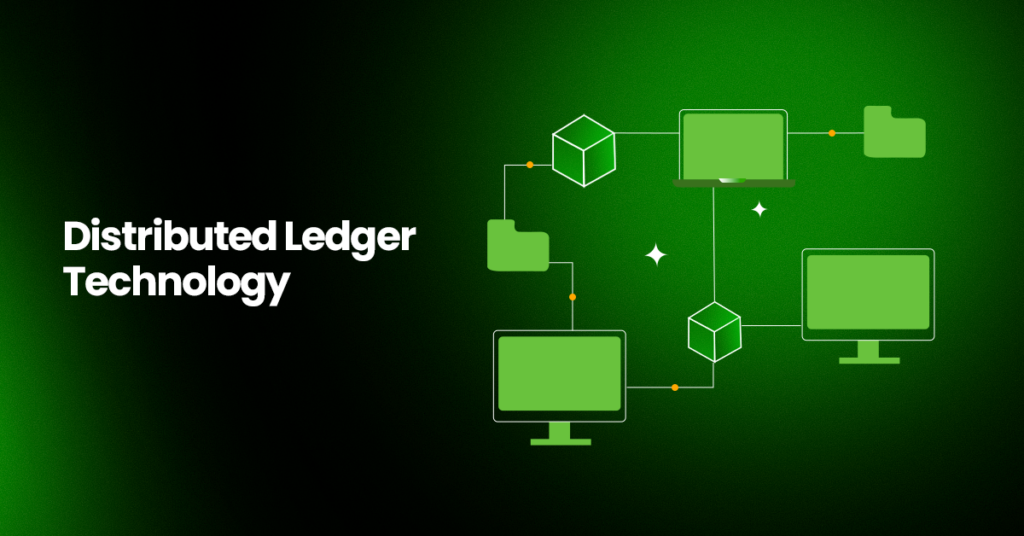
Table of Contents
Distributed ledger technology has been described as one of the most disruptive technologies of the 21st century. Despite the close connection to the cryptocurrencies of Bitcoin and Ethereum, DLT is so much more than just decentralized money.
In this blog, we analyze what DLT is, how it operates, its use cases and roles, and the problems it poses as well as an evaluation of how it is likely to revolutionize industries worldwide.
What Does Distributed Ledger Technology Mean?
Distributed Ledger Technology (DLT) can be described as a decentralized database system in which records are distributed and replicated in a network among multiple participants. Perhaps the most significant difference between traditional centralized systems and DLT is that this new system does not have a central bureaucracy to validate or manage the engagements.
However, in a decentralized setting, data is shared among nodes or computers, and every node possesses a duplicate of the ledger.
DLT’s characteristic is that all participants in the network can be assured that all other participants have identical records of transactions that are transparent, volatile, and virtually impossible to alter. All records produced in the ledger need the approval of the network’s members; therefore, the books are less prone to fraud, manipulation, and tampering.
With all the ongoing developments, individuals now understand that there are forms of Distributed Ledger Technology other than blockchain, including Directed Acyclic Graphs (DAGs), Hashgraphs, etc.
Blockchain, on which cryptocurrencies are built, combines transactions in ‘blocks,’ all connected via a chain. At the same time, other forms of DAGs and DLT may have different structures that are suited to particular applications.
Key Characteristics of DLT
1. Decentralization: There is no central server or authority in DLT that will control it as a centralized system does. However, in the Blockchain system, everyone has a copy of the transactions conducted in a ledger which increases the security from the actions done by some specific members having full control of the information.
2. Transparency: Since everybody involved in a DLT network is able to see the distributed ledger, all the transactions in it are open to all the participants. This all adds up to accountability and confidence bestowed in the system.
3. Immutability: The data is entered on the ledger and it cannot be manipulated by erasing or scratching as is normally the case with other records. This feature makes records difficult to alter and guarantees the records’ security.
4. Security: DLT employs the application of cryptographic algorithms to correct and protect data. Each transaction in the blockchain process involves the use of cryptographic keys for validation of transactions by the network and denying access to the ledger to anyone who has no authority.
5. Consensus Mechanisms: DLT networks also incorporate consensus mechanisms into validating transactions that transpire in those networks. They put in place measures that guarantee everybody verifies the authenticity of the occurrence of a transaction before getting entered into the ledger.
6. Smart Contracts: A large number of DLT systems including blockchains do allow integration of smart contracts which is a form of contract that has the conditions stated in computer code. These contracts initiate operation when certain conditions have been met, and they carry out their action on their own.
How Distributed Ledger Technology Works
The workings of how DLT functions might be described in terms of steps when one user triggers a certain transaction. To better understand the workings of DLT, let’s walk through a basic example of how a transaction is processed on a blockchain:
Step 1: Transaction Creation
A user sends data to the network starting a financial transaction. It may mean passing on cryptocurrency, exchanging items, or any valuables, or data that has to be documented. It is then transmitted to all the nodes of the network as the final step.
Step 2: Validation and Verification
If the remote process is a transaction, then after the submission, it goes through a validation period. This process will include the vetting of the transaction’s legitimacy.
Verification plays a key role in validation normally involving elements of confirming that the sender has enough credit, checking the format of the transaction, and checking for clashes with other transactions. The members of the network (or nodes) employ a consensus mechanism towards the validation of the transaction.
Step 3: Consensus and Approval
It forms part of the ledger after agreement and validation of the transaction. It guarantees the ideal acceptance to all the parties within the network that the transaction is authentic. Various consensus models employed in DLT are characterized as PoW, PoS, and BFT.
• Proof of Work (PoW): Implemented in Bitcoin, PoW involves solving difficult mathematic problems to obtain permission to add the block containing the said transactions to the blockchain. This process involves a lot of power and energy but offers protection of the network to the owner.
• Proof of Stake (PoS): In PoS systems, the validators are selected based on the quantity of the cryptocurrency they own and are willing to ‘lock up’ dor staking. This means that PoS is considered to be more energy-efficient than PoW.
